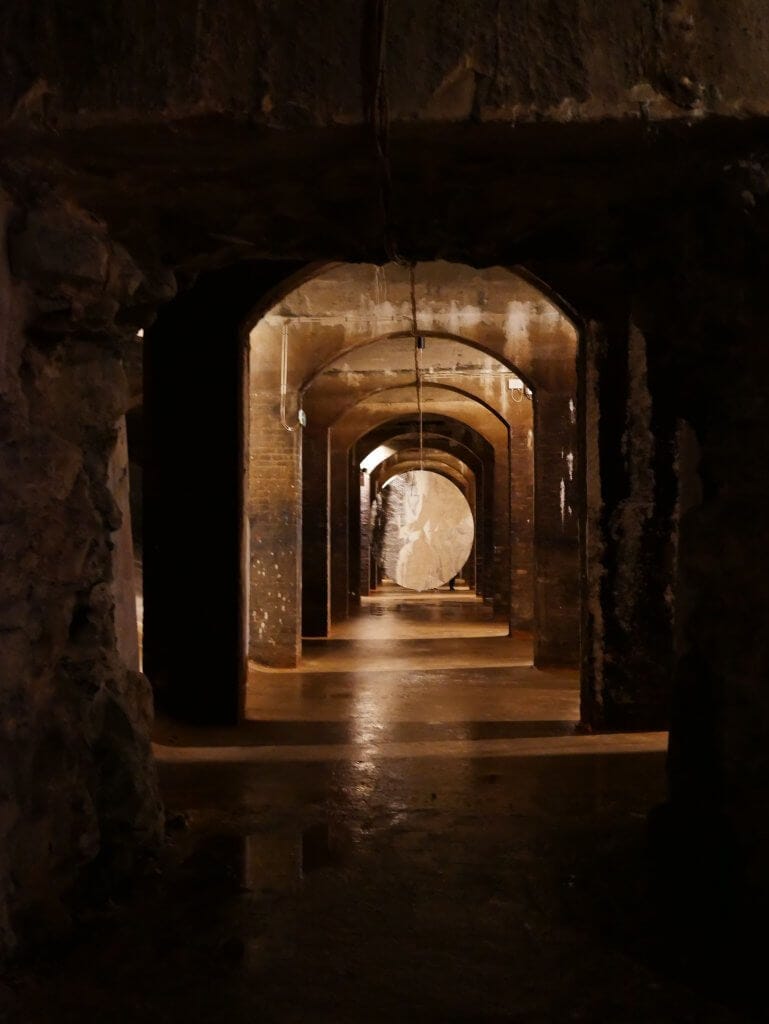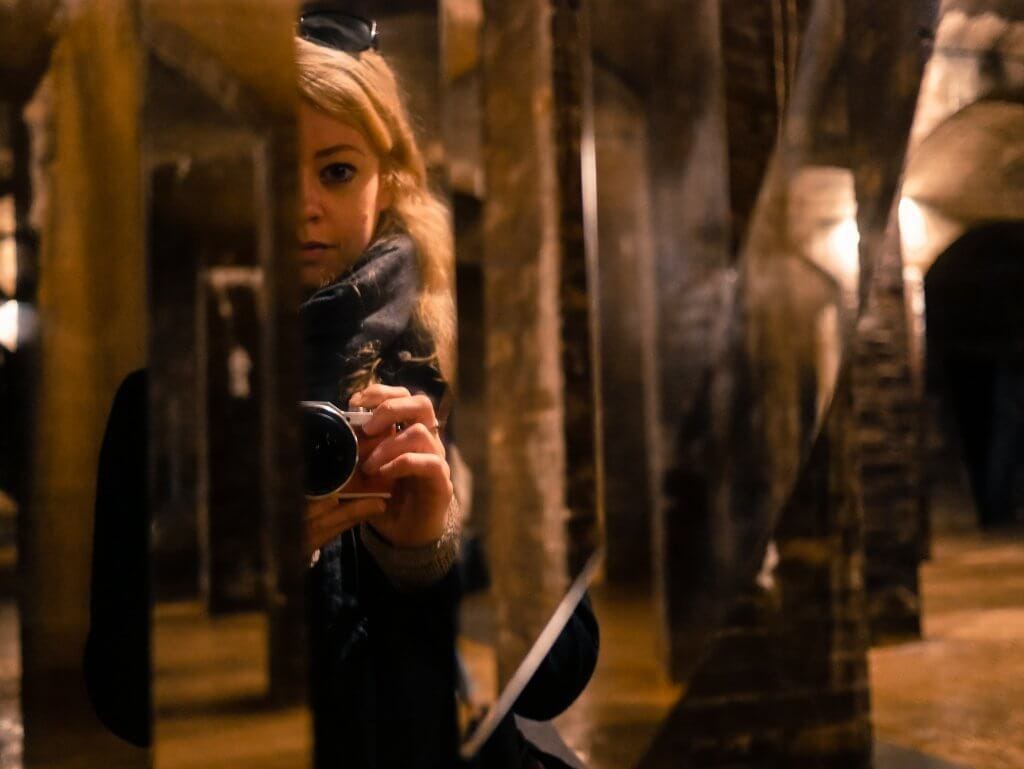The Sound Between the Darkness and the Light: Copenhagen's Cisterns
Søndermarken is in autumn.
In fact, it seems to be both summer and autumn here.
Not even a transition, just both.
Many of the trees are still a vibrant green while others have long lost their leaves, which lie in golden piles across the paths.
Copenhagen’s green spaces are frequent and vast and the cisterns are right in the middle of one such space. Søndermarken.
The trees part for a huge oblong lawn that stretches all the way up to the back entrance of the Frederiksberg Palace. Two prisms of metal and glass jut out of the otherwise perfect lawn, like tiny copies of the Louvre but hiding something much different.
I pay my entrance fee and start walking down the steps to the sprawling caverns beneath. It seems mad that such a perfect lawn can be sat on top of such a disparate place. Such darkness beneath such light. And life.
I turn the corner and am immersed in the dark.
The cisterns once upon a time held the entire capital’s drinking supply. Back in the late 1800s. They don’t seem to have changed much — except they are no longer submerged.
The floor is damp though, little puddles glinting in the tiny amount of light. It’s warmer down here than up in the late September morning above. Warm and a little humid.
It takes a while for my eyes to adjust and be able to make out anything. I like the feeling, for once there is a reason for obscurity that exists outside my optic nerve. For a moment though, I wonder how I’ll move around at all, so exquisite is the dark.
Then a flame roars into life and a cavern of pillars fills my view.
A subterranean maze
The pillars are thick and damp, stone pitted with over a hundred years of wear. The flame dies and light sources are minimal once more. I can see a child holding the tiny blue light of a phone torch far off down the cisterns.
There’s a cage in the middle of this room, one side open. I stand at its entrance. There’s a little blue flame flickering at the end. Harmless. Beckoning. I start walking and hear a click.
The flame starts burning more harshly, illuminating the space I’m in. I pause, then start moving again. Click. The flame grows, spitting and burning towards me. It’s an animal cornered — the closer I get the more it threatens. I keep walking towards it.
Click.
It roars out, screaming in this subterranean world. It’s an odd feeling, this art. It’s a test and a challenge. It takes away the rest of the world. Just me and the flame.
I’m stood at the rope, the simple line that says — no further, you cannot cross this. I want to. I want to step over it until the flame is touching me. What is that?
I turn away and walk back. Click. The flame reduces. Click. It dies further. Click. It’s just a little blue thing again, smouldering gently.
Stand off over. Null.
Hanging here in the dark
The next room, for want of a better word, has huge mirrors hanging within its pillared paths. They rotate slowly, catching what light there is and distorting it. Some are scarred, some are cutouts, some are pockmarked with water droplets.
They catch my reflection and twist it. Mirrors that show that you are not the most important thing in this room.
The truest reflection is surely the one that cuts your image, breaks it up. We are whole. But we’re not.
I could walk here forever. There are few people, the cisterns have only just opened and the tourist season has passed. And where chattering is the destruction of all attractions — this one silences. The children are silent.
I don’t know there’s another room until I’m in it. With minimal vision, exploring this place can only be done slowly and with curiosity.
This room is even darker, only spotlights offer guidance. They shine sporadically down upon bowls that glow in response.
I walk for a while before I hear it. The sound in between the darkness and the light. A ring, like a gong. Then another, a different pitch.
There’s a track running in curves along the ceiling. Strange, I think. Nothing like that exists without a purpose.
Ring.
Sound in motion
Then I see it. A sphere, the size of a baseball drifting through the air in front of me. It swings gently with its own motion and knocks into a bowl, sending its song out into the half light. It drifts off into shadow and another comes along, tapping the bowl again.
Rarely in life are the senses so separated. They come together, inseparable.
Not here. Here they are tweezed apart. Vision is separated from hearing so that when they do come together, you feel it.
I hear a ring behind me.
The spheres are numerous, pulled along the track by something unseen. They follow their never-ending route, sometimes bumping into bowls, sometimes missing them. Each time is unique, unpredictable.
This room is never the same. The route doesn’t change, the bowls don’t move but the spheres — their flow is unique and that changes everything else.
It’s easy to see patterns. To make assumptions on how they work, what will happen next. Sometimes it’s hard to appreciate the variables, the little alterations that can have resounding effects. Silence. Sound.
And it’s not always us. We think it is, but it isn’t.
We are lead by the beckoning flame, the twisting reflection, the sphere approaching the bowl. The sound in the silence.
We are lead.
In is the Only Way Out is an exhibition by Jeppe Hein in Copenhagen’s Cisterns until 30th November 2018.



